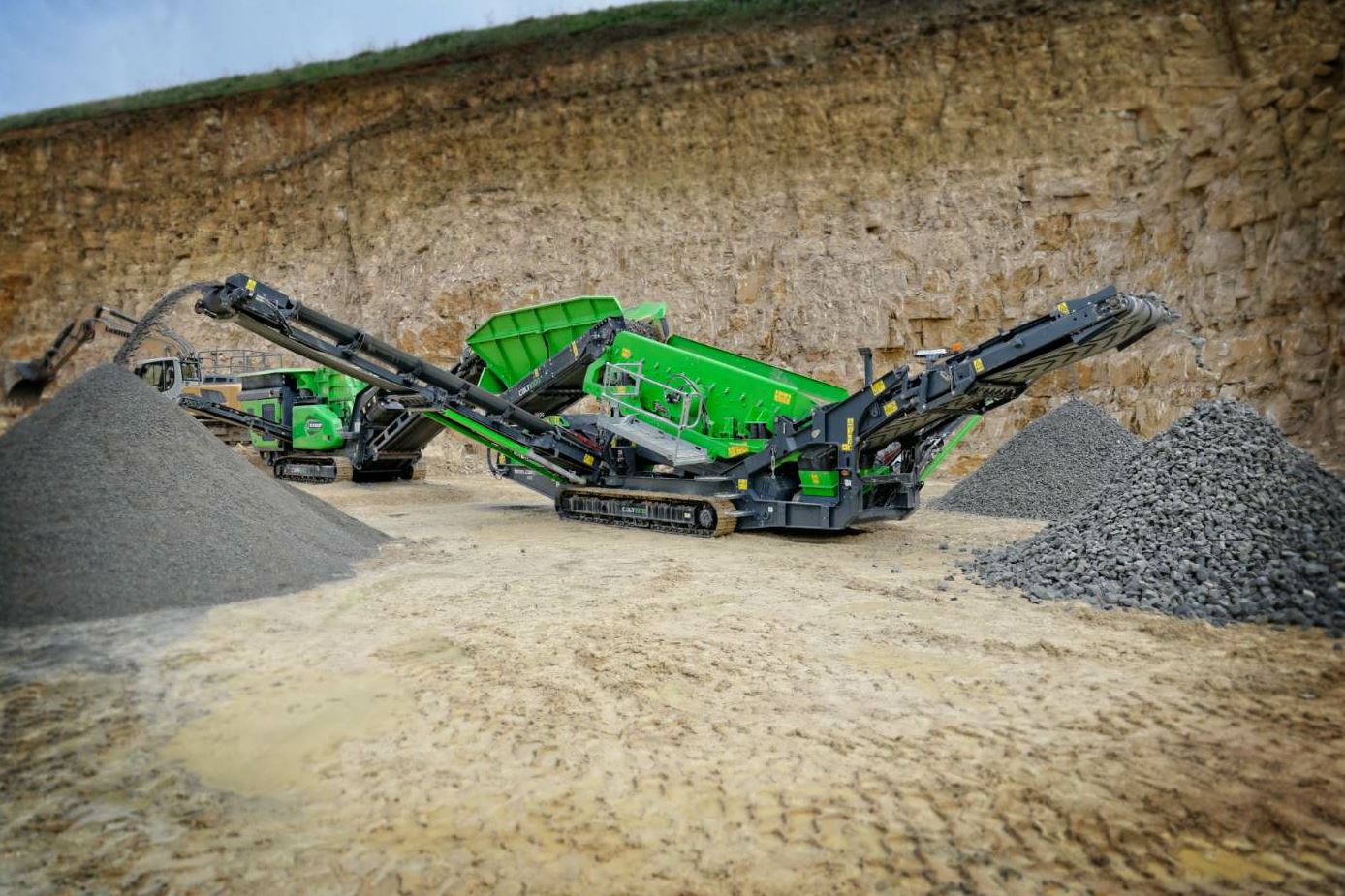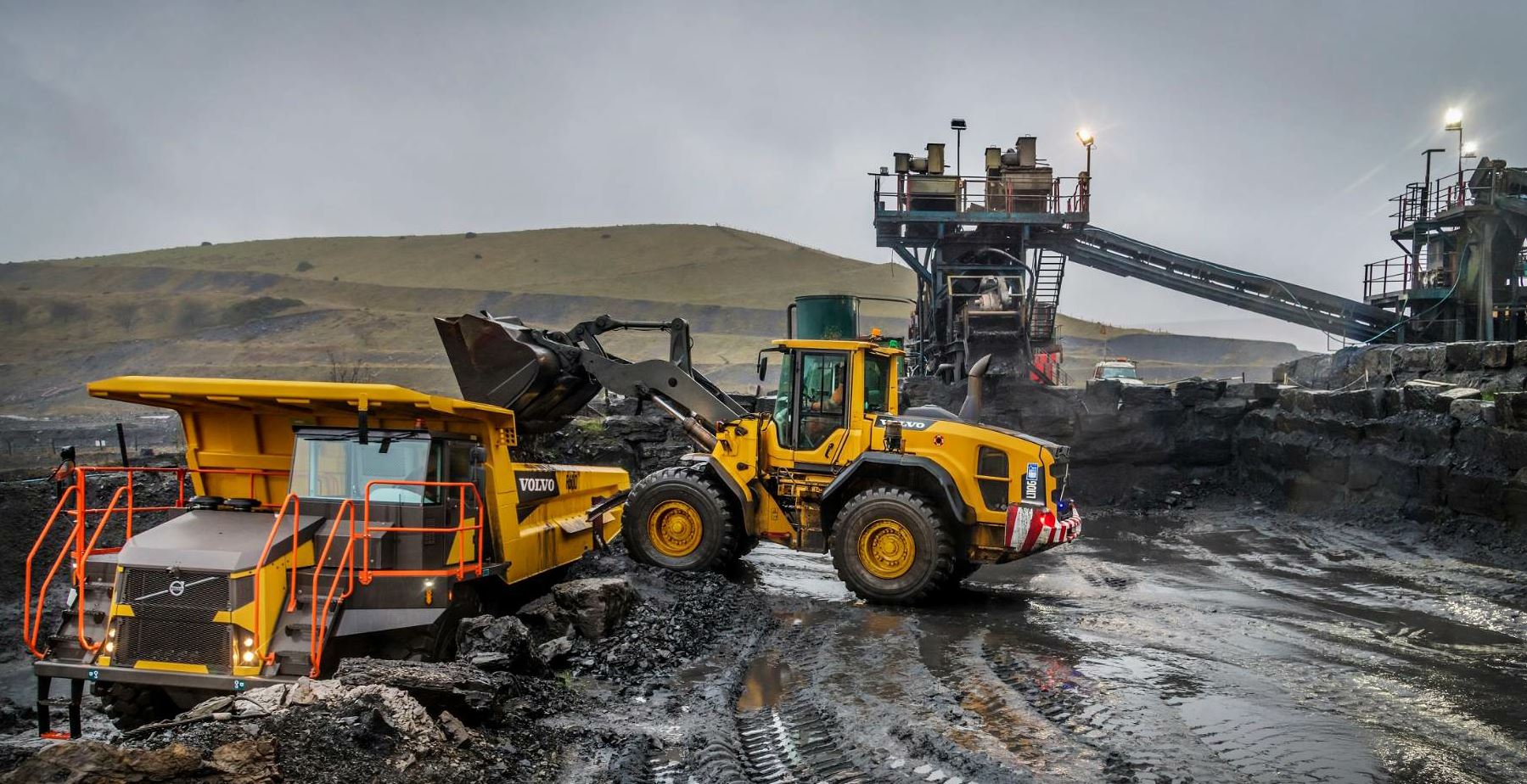Lower Costs with Mobile Crushing Equipment
BY Sandy Lender

For this year’s aggregate-centric issue, original equipment manufacturers (OEMs) shared ideas relative to placing mobile crushing equipment near the face in the quarry. Both quarry and asphalt plant managers must be aware of loading equipment cycle times. Sub-optimal cycle times can cost money in terms of fuel, maintenance and equipment life span.
The optimization of cycle times contributed by mobile crushing and screening equipment can benefit both aggregate and asphalt production facilities. No one is suggesting plant or quarry owners phase out jobs. The question of how to leverage the talent in your team isn’t the topic of this article. This article focuses on using technology in your existing quarry or pit to your best cost-advantage.
The integration of portable crushing and screening equipment to existing facilities can increase productivity and profitability by reducing cycle times for loading equipment. But mobile crushing equipment needs expert pre-planning for proper implementation, which will save time and money in the long run.
“Some of our dealers will permit mobile units ahead of time at different locations, giving them greater flexibility for moving units between branches, depending on demand,” said Stephen Whyte, track product manager for KPI-JCI and Astec Mobile Screens. “The frequency of relocating the crusher or screen depends on the layout of the site, how the units are set up and other mobile plants that are being used. In some instances, track plants may be moved multiple times throughout the day.” (See Sidebar, “Top 4 Reasons to Move the Mobile Crusher.”)
Excess movement of the wheel loader in relation to the primary crusher indicates time to move the crusher, said Joe Schappert, technical trainer for Kleemann, a division of Wirtgen America. “The loader will travel from the primary jaw crusher at the face…When the distance increases between the face and the primary, the wheel loader may be exceeding the optimum distance from face to crusher, conveyor or truck. This is when you move the primary crusher closer to the face.”
This example shows mobile equipment in use where rock must be separated from clay. The unit is able to provide the crew multiple sizes of rock for processing. Astec’s Paul Smith discusses the importance of reducing size, thus empty space, when conveying material in the article “Lower Costs with Mobile Equipment” in this month’s AsphaltPro magazine.
Made to Move
Innovations in the marketplace have made the moves easier for operators than in the past. “Advancements on units like our FT4250 give operators the ability to track the unit while continuing to crush material into pay product,” Whyte said. “In instances where multiple units are configured together, the location of the crushing depends on the ability to feed correctly. For example, if your loader’s travel distance increases to the point where you are unable to feed the jaw and cone crushers effectively, the mobile spread should be moved.”
And that’s the point where efficiency truly comes in for the operation. OEMs agreed that one of the most important considerations when developing a crushing operation plan is auxiliary machine cycle times.
Loader and haul truck OEMs, among other equipment vendors, have determined the ideal operating cycle times to get the best fuel efficiency and equipment wear costs for their pieces of production equipment. If the plant manager determines the cycle time is increasing beyond the OEM’s best suggested time, the producer may need to make a move.
“As stationary aggregate production facilities age in productions, the distance from the face increases,” Schappert explained. “Companies are now exploring other options to reduce travel cycle times. One solution is to place a track-mounted primary plant at the face and convey material via overland conveyors. With today’s technology in track-mounted crushers, producers maintain production requirements and reduce overhead costs, which in turn reduces cost per ton of material produced.”
Paul Smith, director of international sales & marketing for Astec Aggregate and Mining, Chattanooga, spoke in terms of moving volume of material. “When you load big boulders in the truck, there’s a lot of voids between them. If you can crush the big boulders closer to the face, you move smaller rock with fewer voids away from the face.
Volume reduction equals fewer hauls and better fuel use. We’re applying lean principles of business to construction right there at the blast face.”
Whyte spoke of combining stationary and mobile systems to gain the benefits mentioned above. “There are a number of quarries that are using a track spread to complement a stationary system. While mobile units have many options, they are designed to work in conjunction with other units in closed or open circuit configurations, providing operators maximum flexibility for different types of applications.”
The “many options” in the marketplace were on Smith’s mind while we spoke. “You need an experienced crew for the stationary plant, but much of the industry’s tribal knowledge has been engineered into the mobile units. The conveyors have been set at an angle for no spillage.
Conveyor speeds are pre-designed and pre-set. Different machines are designed for different materials. You don’t want to misapply the machine to your application.”
Silence!

Processing the larger boulders close to the face will allow “fuller” loads with fewer voids, thus a more efficient operation. Photo courtesy Volvo Construction Equipment.
When it comes to noise mitigation, Schappert spoke specifically about the Kleemann equipment’s engineering. “The development of the new EVO and PRO series machines use different technology. Kleemann crushers use a fluid coupling and electrical power to drive the functions of the plants. This combination affords the Kleemann crusher some of the lowest fuel consumption in their class and maintains a decibel rating near the same level as most production loaders and excavators.”
Smith pointed to the enclosed engines on mobile units in general.
“Keep an eye on the engines,” he said. “In some areas, you need a permit on the engine. Enclosed engines are quieter.” For Astec Industries equipment, he spoke of reduced metallic surfaces where aggregate strikes. “We’ve built in more non-metallic surfaces like rubber wires, rubber springs, rubber hoppers, to mitigate noise.”
Whyte also mentioned the use of rubber lining. “Many producers use rubber liners on their equipment to minimize noise. With our hybrid units have the ability to quickly switch from diesel to line-power, which further reduces noise, and gives producers the opportunity to work indoors and in other environmentally sensitive areas.”
Putting mobile processing equipment close to the face offers producers reduced costs in fuel and equipment wear, but the decision to invest in mobile equipment needs to be the result of an analysis of the producer’s current costs and how mobile equipment would enhance return on investment.
“The aggregate industry, like any other industry, faces increased levels of competition and producers are constantly under pressure to reduce costs,” Whyte shared. “Track units provide many cost reductions for producers in the long term. The units often require less heavy auxiliary equipment and the costs associated with them, including labor and fuel. Many track plants are set up quickly and can be easily moved for maintenance or in preparation for a blast. They can then be moved back effortlessly; no dismantling is required.”
Top 4 Reasons to Move Your Mobile Crusher
- It is easy to move around the site; can be done quickly to adjust for production needs
- Distance from face to plant has increased over time
- Cycle time for loaders & haul trucks has lost efficiency; wear costs & fuel consumption are going up
- Overall production will be enhanced by moving primary closer to face
Source: multiple OEMs
